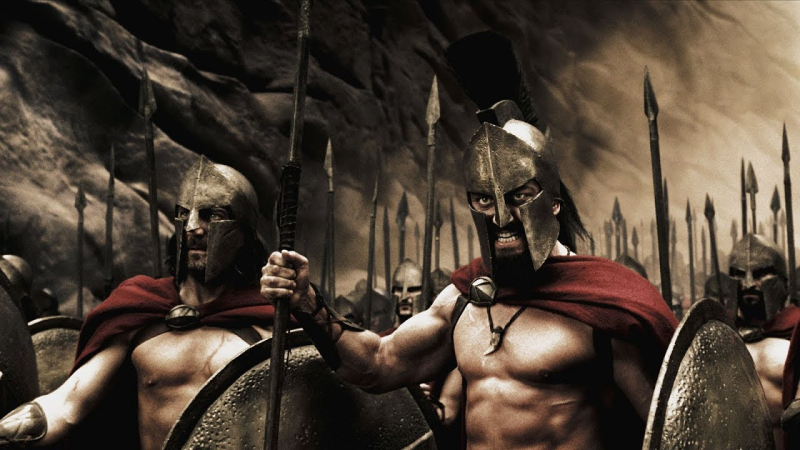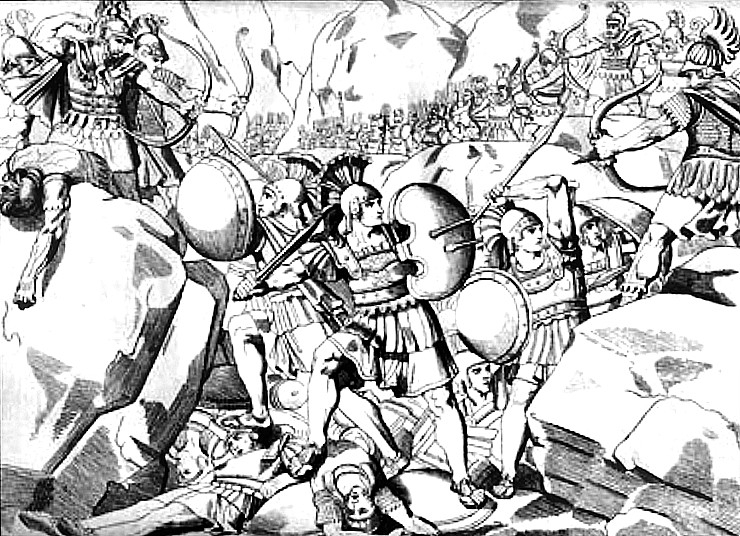The Persians made no progress in the first two days of the battle
One of the most interesting facts about the Battle of Thermopylae is that the Persians made no progress in the first two days of the battle. Xerxes eventually decided to fight the Greeks on the fifth day after the Persians arrived at Thermopylae and the first day of the conflict. First, he sent 5,000 archers to launch a barrage of arrows, but they were ineffectual because they were fired from at least 100 yards away. Following that, Xerxes dispatched a force of 10,000 Medes and Cissians to capture the defenders and bring them before him. The Persians quickly began a frontal assault on the Greek position in waves of roughly 10,000 troops. The Greeks fought in front of the Phocian wall, at the narrowest part of the pass, with a few warriors as possible.
The Greeks were "superior in valor and in the large size of their shields," according to Diodorus, and "the men stood shoulder to shoulder." This is most likely the classic Greek phalanx, in which the troops built a wall of overlapping shields with layered spear points sticking out from the sides of the shields, which would have been extremely effective as long as it spanned the width of the pass. The Persians' weaker shields and shorter spears and swords prohibited them from attacking the Greek hoplites successfully. According to Herodotus, each city's soldiers were maintained together; units were rotated in and out of the combat to prevent exhaustion, implying that the Greeks had more men than necessary to block the pass. The Greeks killed so many Medes that Xerxes is supposed to have risen up three times while viewing the combat from his seat. The initial wave was "cut to ribbons," according to Ctesias, with just two or three Spartans killed in return.
According to Herodotus and Diodorus, the monarch, having assessed the adversary, threw his strongest warriors, the Immortals, an elite corps of 10,000 men, into a second assault the same day. The Immortals, on the other hand, fared no better than the Medes and made no ground against the Greeks. The Spartans supposedly utilized a strategy of pretending to escape and then turning around and slaughtering the enemy troops who chased them down.
On the second day, Xerxes sent in the soldiers to attack the pass, supposing that their opponents, who were small in number, were now handicapped by wounds and could no longer resist. The Persians, on the other hand, had no more success on the second day than they did on the first. Finally, Xerxes called a halt to the assault and returned to his camp, very confused.
Later that day, while the Persian king contemplated his next move, he received a windfall: a Trachinian named Ephialtes informed him about the mountain path around Thermopylae and offered to direct the Persian army. Ephialtes' motivation was a desire for a prize. That evening, Xerxes dispatched his general Hydarnes and the Immortals under his command to encircle the Greeks via the path. He did not, however, say who those men were. Because the Immortals had been bloodied on the first day, it is conceivable that Hydarnes was given overall command of an enlarged force that included what remained of the Immortals; according to Diodorus, Hydarnes had a force of 20,000 for the operation. The path led from the Persian camp to the east along the ridge of Mt. Anopaea, behind the cliffs that surrounded the pass. It split, with one way descending to Phocis and the other down to the Malian Gulf at Alpenus, Locris' initial town.












